ATTRACT final project¶
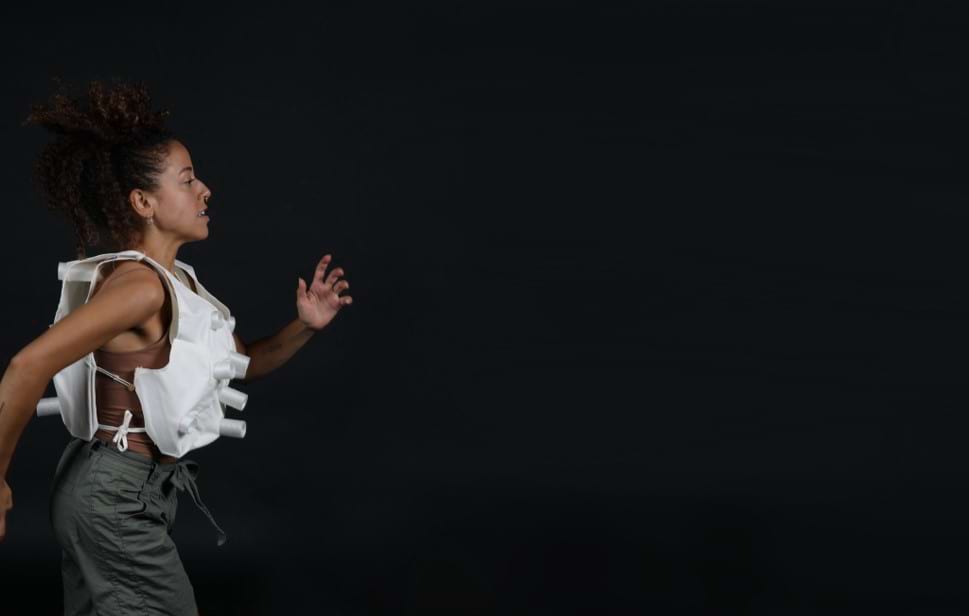
CERN research trip¶
As a part of the Attract project, we did a research trip to CERN, Geneva, to do an intensive ideation workshop of 3 days. For those 3 days, we had to choose one of the challenges of the future and come up with an innovative idea of how to solve this problem, using fashion and technology.
Along with Mariaclara Golfo, the issue we decided to tackle is the problem of wet bulb temperature. Wet-bulb temperature (Tw) is the temperature when humidity level is 100%. Tw over 35°C induces overheating in humans and mammals, marking humanity's survivability and adaptability limit to climate change. We took inspiration from the wind towers, adiabatic urban cooling systems and phase changing materials to design a shelter to be worn during wet bulb temperature events. We called this shelter "AEMULA".
This presentation sums up all our research for those 3 days and the entiere conceptualisation of the project.
Research and prototypes¶
After coming back to CERN, we had 6 weeks to prototype and continue the research on what we came up with at CERN. First thing we did was to prototype a physical model of the final shelter we wanted to make.
Attempt 1¶
Our first prototyping attempt was actually at CERN during the 3days "hackathon". Here are our first sketches and we made the prototype using pipes, fabric, and laser cut acrylic.
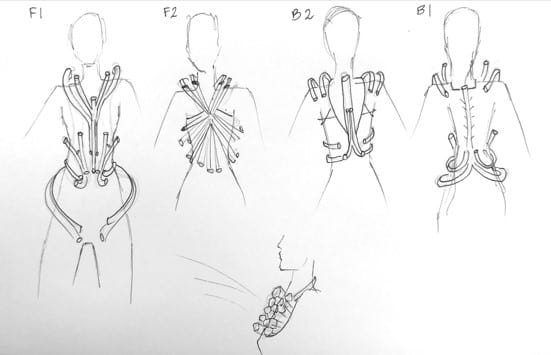
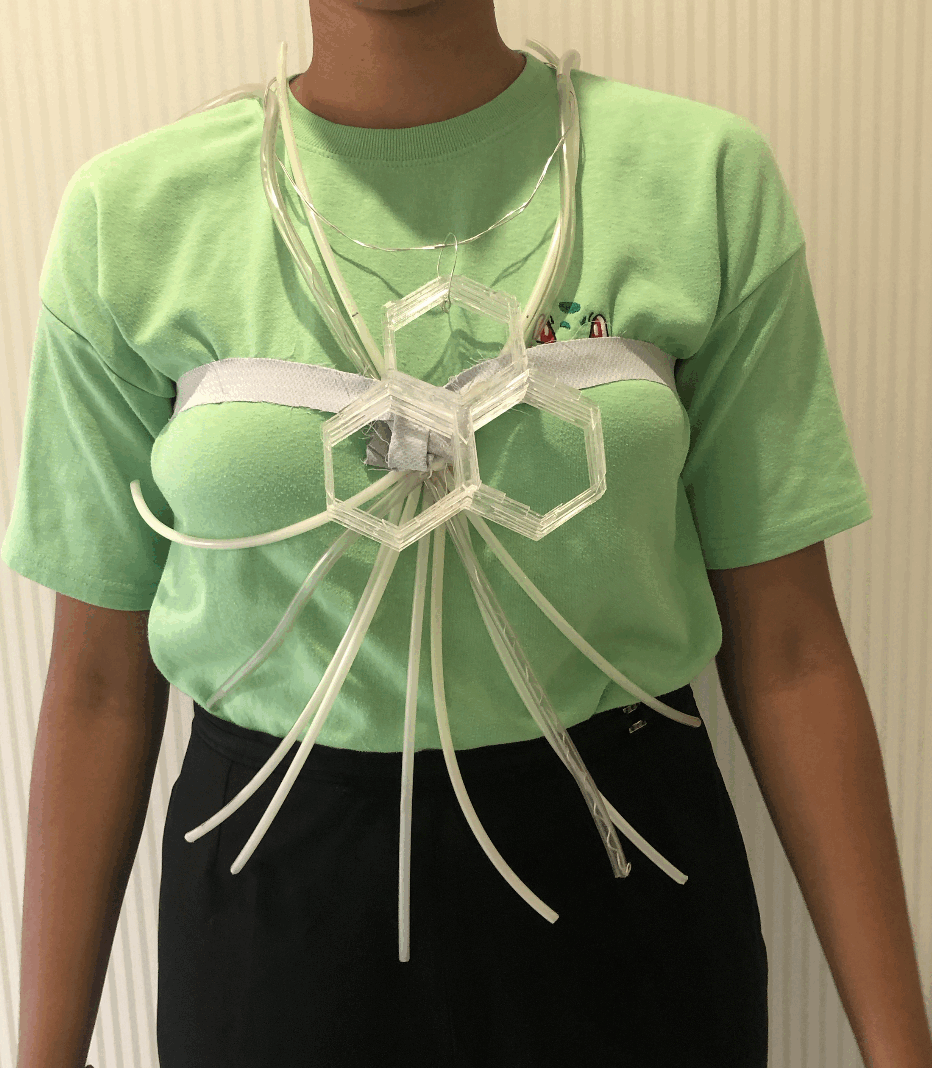
Attempt 2¶
For our second attempt, we decided to make a structure of pipes directed to some of the warmest areas of the body, but that woud still not impair the movemet of the bearer, hence the focus on the upper part of the torso. The sketch was first translated to a paper prototype, then to a 3D model too.
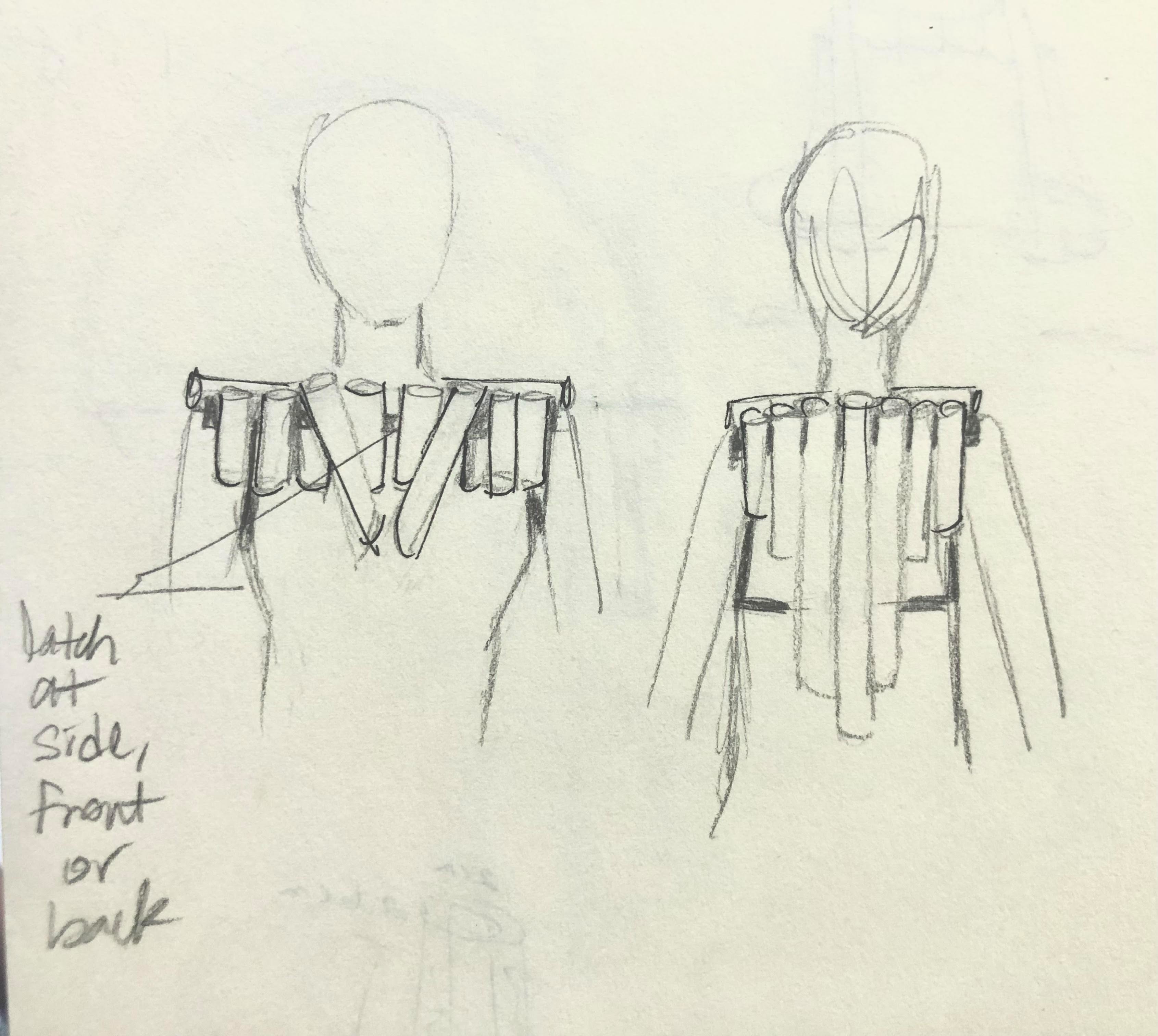
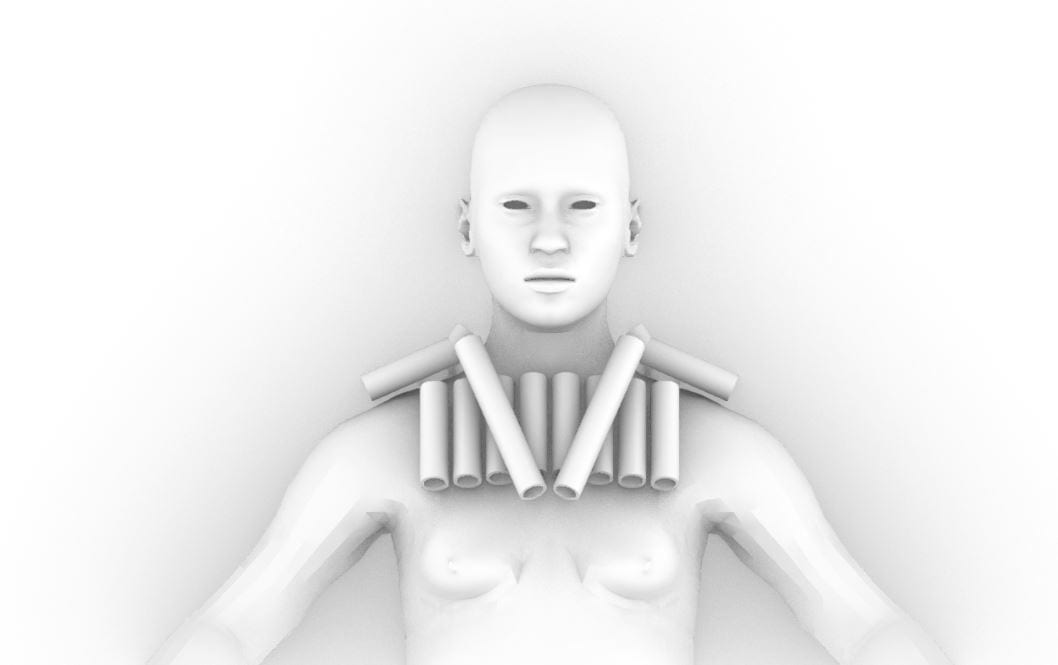
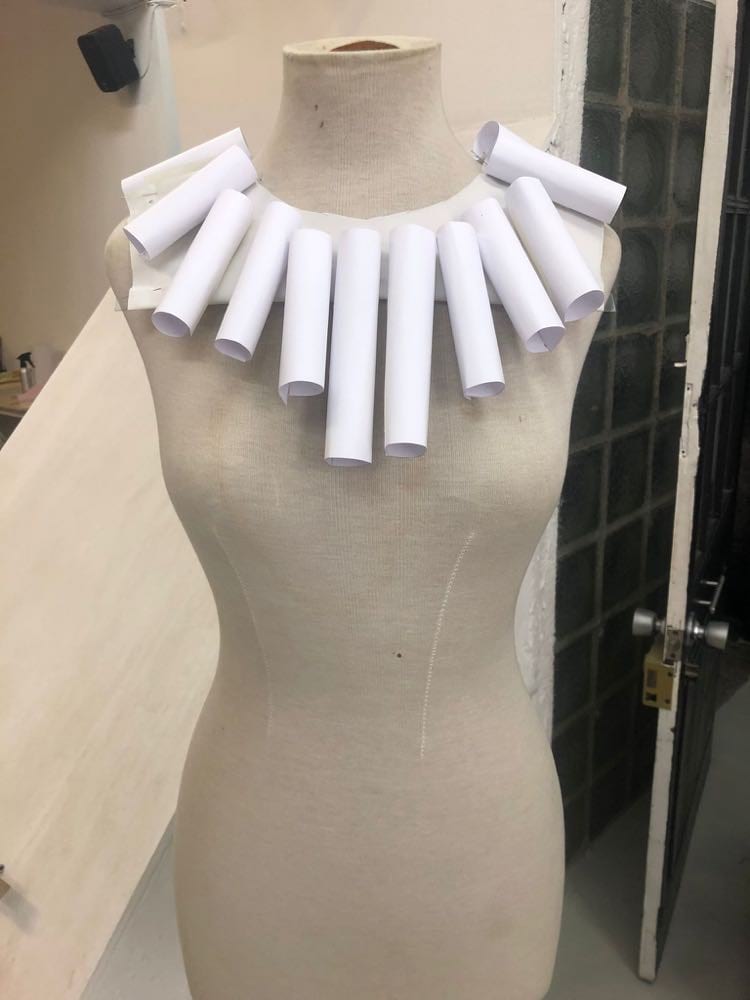
Attempt 3¶
After doing some prototyping of the second model using paper, we realised the amount of pipes of the first 3D model was not enough and decided to go for another structure inspired by bee hives, that would a bit more constraining of the movement than the first one but would be more efficient. The 3D model was made using Rhinoceros 3D and the grasshopper plugin, so that it could be parametrical. That way, the number of holes, the thickness of the walls and their height could be adjusted.
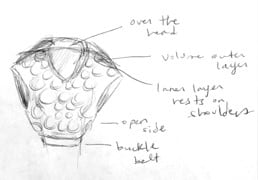
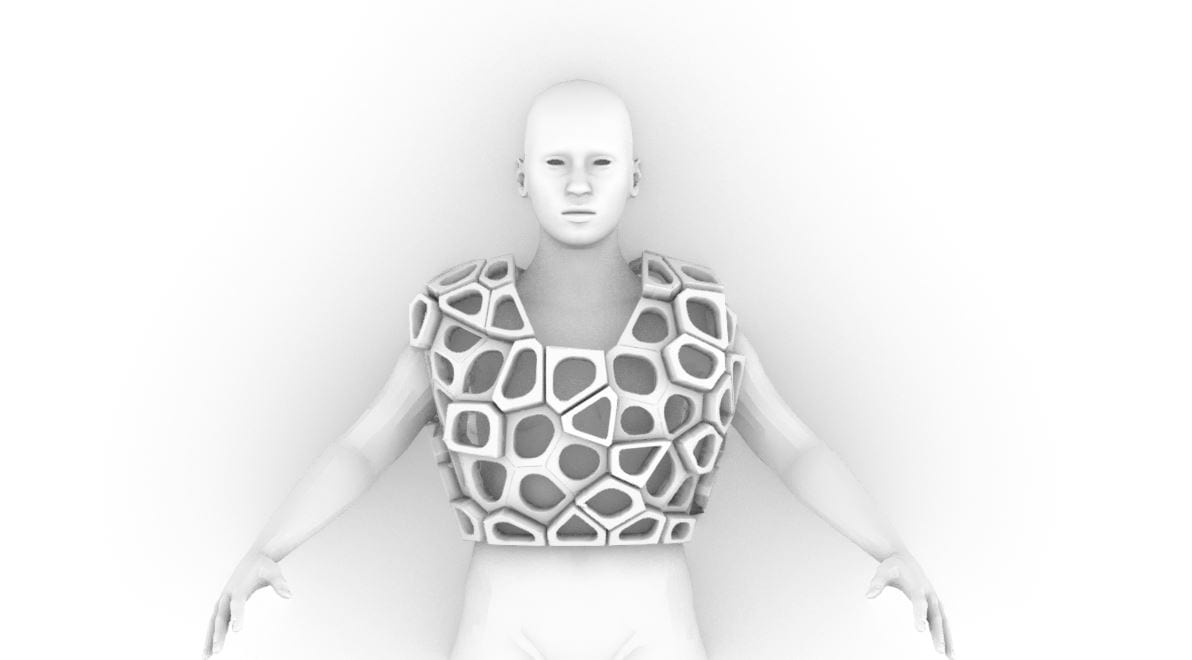
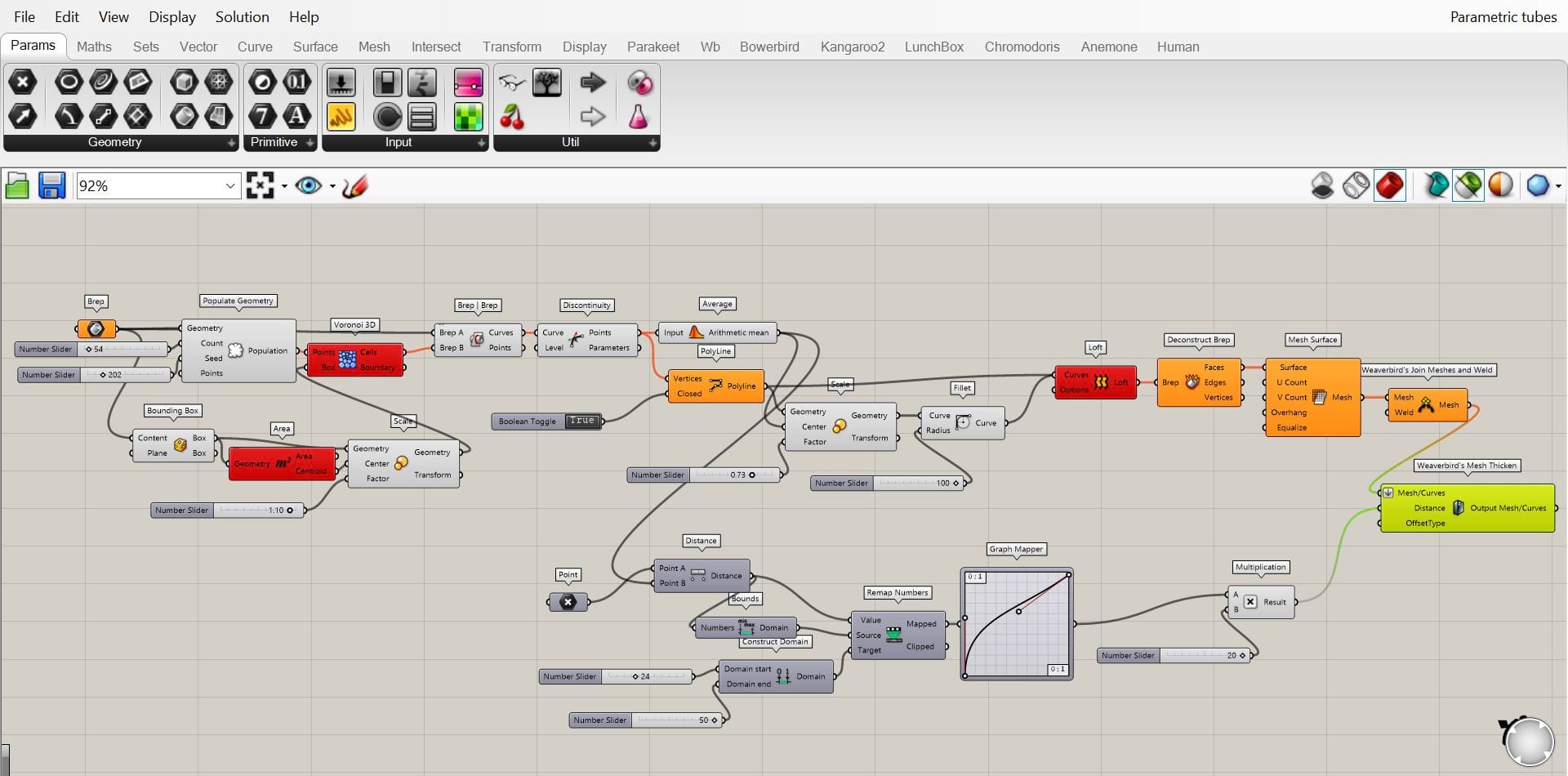
Attempt 4¶
After having the third version of the shelter ready, we were not satisfied by the aesthetics of it and decided to go back to the inspiration of the Adiabatic Urban Cooling tower. This 3D model was made using Rhinoceros 3D and the Grasshopper plugin. It is entierly parametric and only requires the user's body scan to be made custom size and shape for every bearer.

Once we had settled for this design, we decided to do the physical prototype of it. Using Rhinoceros 3D, we drew pipes that would trap the PEG-1000. They were designed to be hollow and hermetical, with a wavy structure on the bottom to let the air flow once it reaches the body.
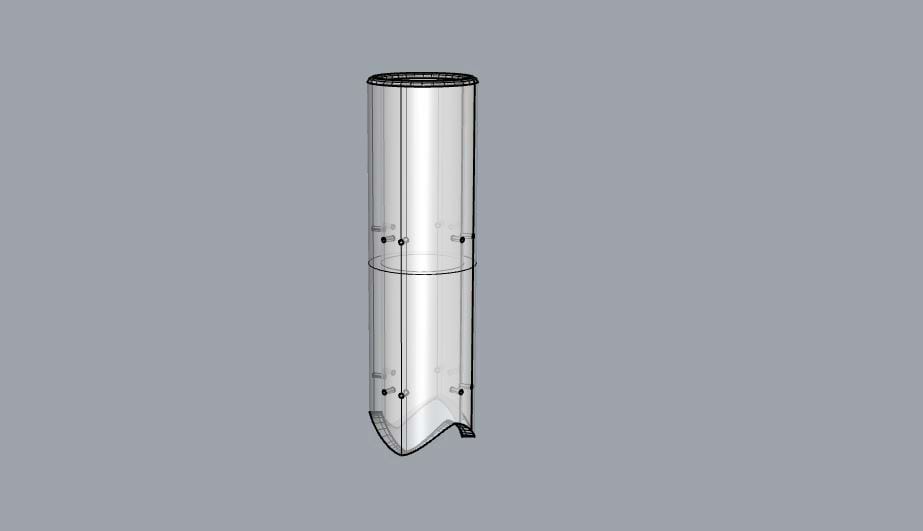
Pipes were printed using filaflex to keep them flexible. Flexibility might be needed since the phase change of the PEG-1000 from solid to liquid comes with a change in density, but also for better movement of the bearer of the shelter.
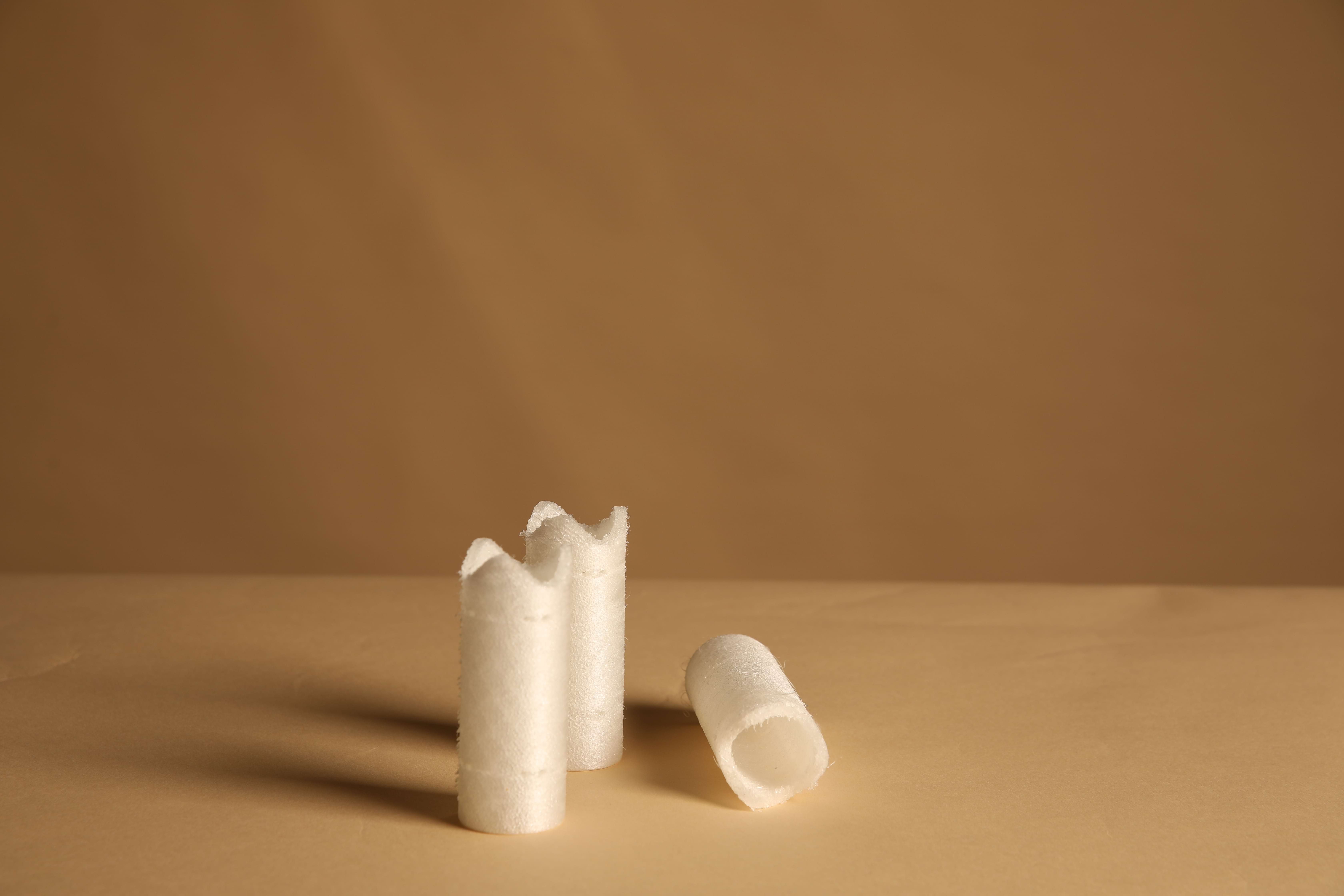
We then proceeded to make the structure of the shelter using fabric and plastic. The process included fitting, paper pattern creation, fitting and adjustments, pattern cutting on fabric, sewing, fitting, tube plotting and tube attachment using fabric glue.
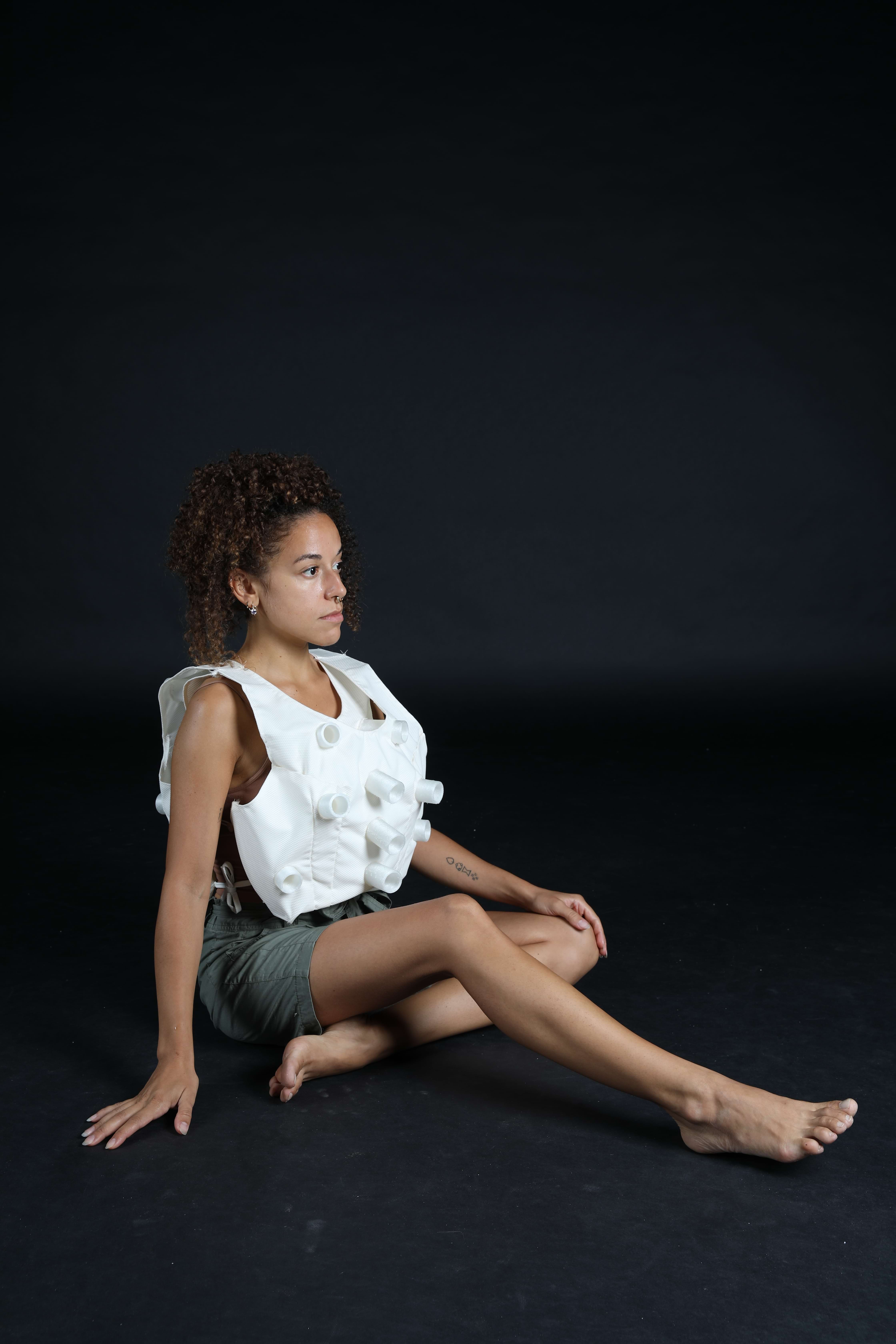
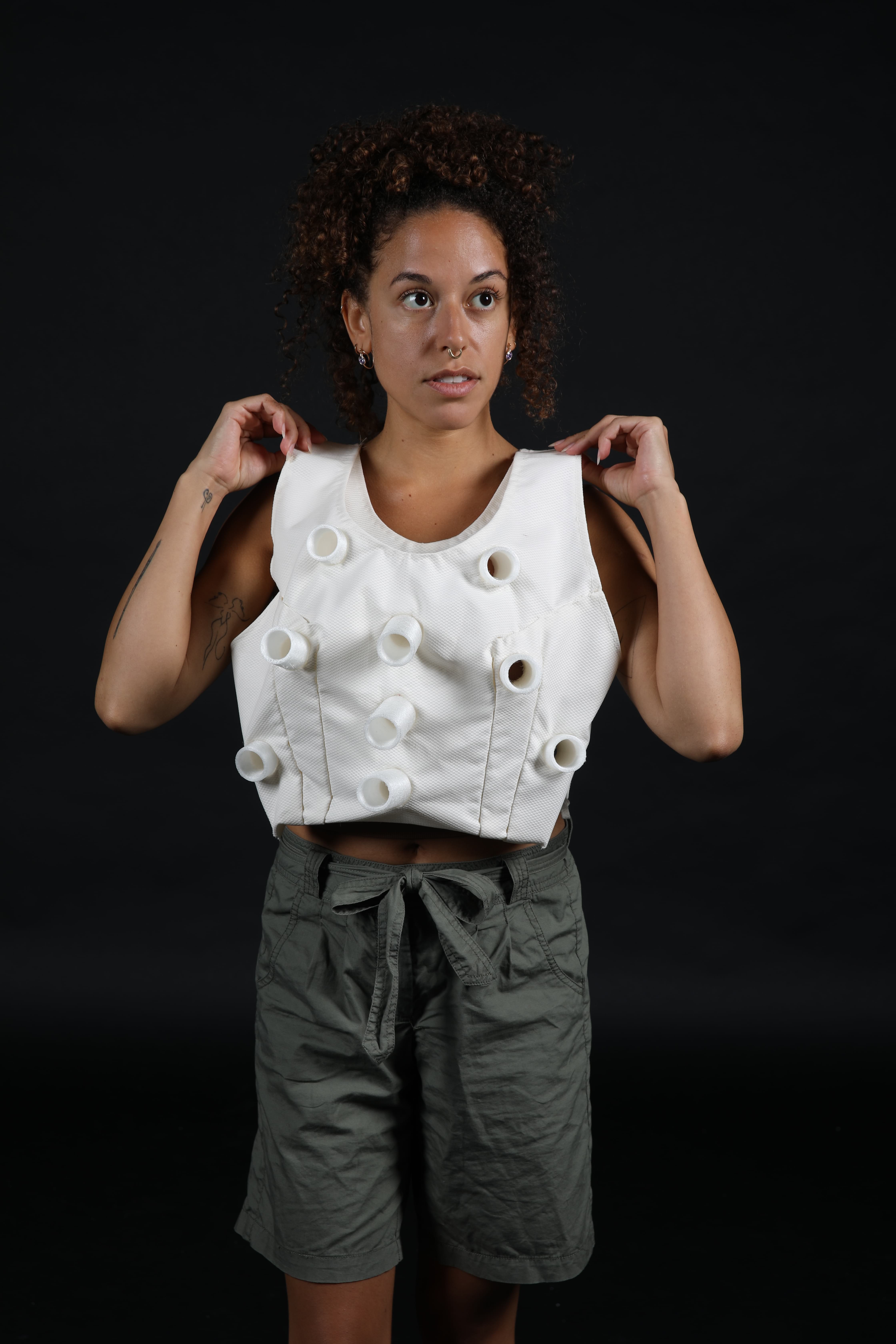

AEMULA presentation video¶
In order to understand better how the AEMULA shelter is supposed to be used, here is a video we made for a better contextualization of how it will work and when it will be useful.